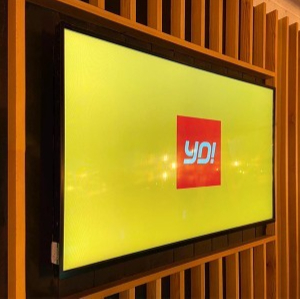Digital menu boards can help build a brand by creating a consistent and visually appealing brand image across all locations. By using high-quality images, videos, and animations, digital menu boards can showcase the brand’s products in an attractive and enticing way, helping to create a strong brand identity and recognition.
Digital menu boards can also boost sales by making it easier for customers to navigate the menu and find the items they want. By highlighting daily specials or promoting new menu items, digital menu boards can encourage customers to try something new, increasing sales and driving revenue.
Upselling can also be improved with the use of digital menu boards. By displaying complementary items or offering combo deals, digital menu boards can encourage customers to add more items to their order, increasing the average order value and driving revenue.
Lastly, digital menu boards can help improve margins by enabling menu changes to be made easily and quickly. This means that menu items can be updated and removed as needed to ensure that the menu is always up-to-date with current prices and inventory. Additionally, by displaying high-margin items or promoting items that are overstocked, digital menu boards can help to increase profits and improve margins.
How McDonald’s Experienced The Future With Digital Menu Boards
One specific example of a fast food organization that has successfully used digital menu boards to increase sales and margins is McDonald’s. In 2018, McDonald’s began rolling out their “Experience of the Future” initiative, which included the installation of digital menu boards in their restaurants.
By using dynamic and interactive digital menu boards, McDonald’s was able to display a variety of menu options, including meal deals and limited-time offers. The digital menu boards also enabled the fast food giant to easily adjust pricing and promotions, allowing them to quickly adapt to changes in the market and customer preferences.
According to a case study by Samsung, McDonald’s experienced an 8% increase in overall sales and a 7% increase in average check size in restaurants that had installed the new digital menu boards. Additionally, the study found that the digital menu boards helped to increase customer satisfaction by providing a more engaging and visually appealing experience.
Overall, McDonald’s success with digital menu boards demonstrates how this technology can be used to improve sales and margins in the fast food industry. By leveraging the power of digital signage, organizations can create a more immersive and personalized experience for customers, while also improving their bottom line.
The McDonald’s case study is Samsung’s “QSR Drive-Thru Digital Signage Solution Case Study” published on their website. The case study details how Samsung’s digital signage solution was implemented in McDonald’s drive-thru and restaurant locations as part of the “Experience of the Future” initiative. It includes statistics and data on the impact of the digital menu boards on McDonald’s sales and customer satisfaction. The case study can be found at the following link: https://displaysolutions.samsung.com/insights/case-study/mcdonalds-experience-of-the-future.


